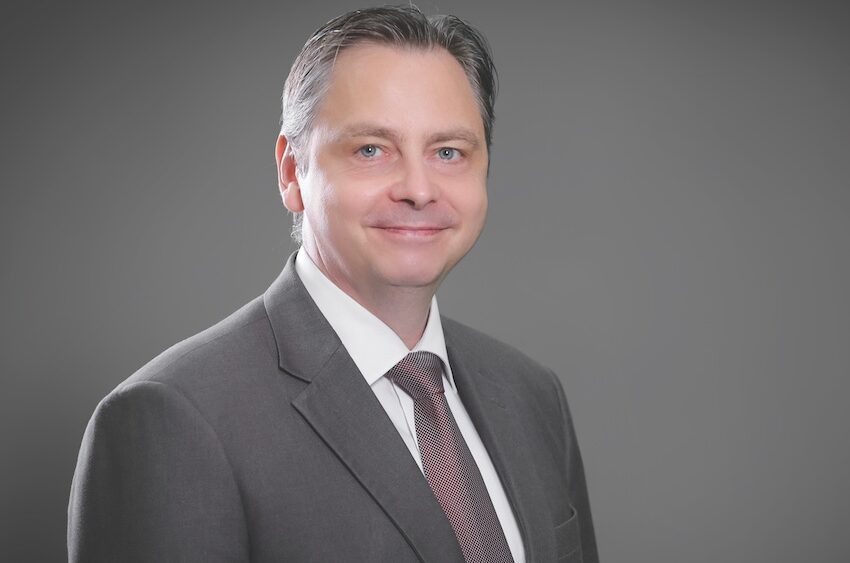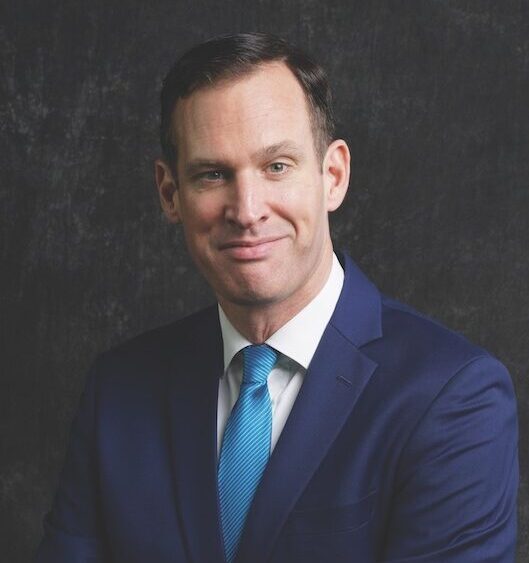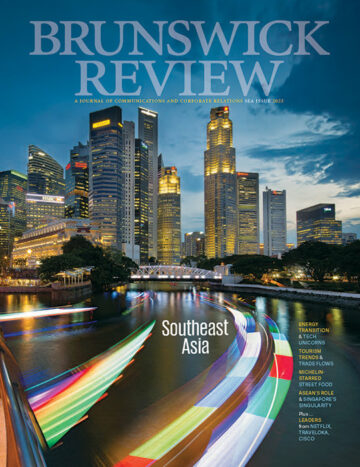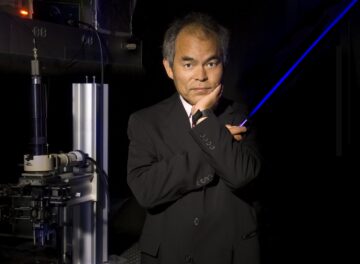Two European experts on trade with Vietnam talk to Brunswick’s Thai Le about the country’s potential.
Tech companies are slowly adjusting their global supply chains, shifting some of their production lines to Vietnam. The country of over 97 million people has attracted an influx of new foreign investments in recent years. Apple announced plans to test production of its smartwatch and MacBook in Vietnam. Google moved its smartphone production here from Southern China. Lego is investing more than $1 billion to build a new factory. And Lenovo, Komatsu, Nintendo and Sharp are expanding their manufacturing presences in the country.
“We have seen remarkable progress in Vietnam’s economic growth and investment environment,” says Marko Walde, Chief Representative of the Delegation of German Industry and Commerce in Vietnam (AHK Vietnam). “Ten years ago, the country was a destination for investment in textiles, garment and metal processing. Now, everybody talks about investments in electronics, automobile supply and high tech.”
Most recently, Vietnam welcomed around 50 US companies on a mission to explore growing global manufacturing hubs and supply chains in semiconductors, fast-moving consumer goods, toys, furniture, food and agriculture, digital economy, creative economy, financial services and healthcare.
Gabor Fluit, Chairman of the European Chamber of Commerce in Vietnam, also sees dramatic changes in the country’s profile, as evidenced by a growth of foreign direct investments, or FDIs.
“If you look at Vietnam 20 years ago, the main commodities for export were crude oil, rice, coffee and tea,” Fluit says. “Since the 2010s, Vietnam has attracted many industrial FDIs which resulted in higher export revenues.”
Vietnam has absolutely benefited from the global supply chain shift, and with the right policies in place, the country will enjoy even more benefits.
China Plus One
International businesses have long been investigating moving a portion of their supply chain investment to countries other than China to beef up flexibility and resilience for production lines. But it wasn’t until the US-China trade war, spurred by former US President Donald Trump, that serious talk about a “China plus one” strategy started to emerge. The heightened mistrust between China and the West, together with China’s zero-COVID policy (relaxed in early 2023), posed further challenges to supply chains. Companies now are pursuing supply chain diversification, with Vietnam being one of the most notable beneficiaries. In 2022, the total FDI registered in Vietnam reached $27.72 billion, a 13.5% increase from the previous year.
“Vietnam has absolutely benefited from the global supply chain shift. With the right policies in place, the country will enjoy even more benefits,” Fluit says.
A combination of factors enabled the country to benefit from this situation, he says. First, like fellow ASEAN member Singapore, Vietnam has proven to be very pro-business, with a high number of free trade agreements. Today, it has signed a total of 17 trade agreements and is a member of other major ones, including the Comprehensive and Progressive Agreement for Trans-Pacific Partnership, the Regional Comprehensive Economic Partnership and the EU-Vietnam Free Trade Agreement. Second, with the third-largest population in ASEAN after Indonesia and the Philippines, Vietnam offers relatively low-cost labor. The country also currently has a “golden population,” with about 70% of working age. And third, the country’s political environment has been very stable over the past decade.
In these and other factors, Walde finds evidence of Vietnam’s willingness to welcome foreign investment and sees that strategy paying off.
“I think Vietnam has always been among the top ASEAN countries for companies that are exploring investments,” he says. “There are more than 5,000 German companies in China and over half of them are thinking about a ‘China plus one’ strategy; 90% of those are looking into Southeast Asia and both Vietnam and Thailand are amongst the top choices.”

With a wave of FDIs in technology coming in, companies are hoping an even better business environment will emerge. However, more initiatives and actions by the Vietnamese government will be required to overcome the challenges.
Multinationals have been in search of the right skill sets. According to a recent survey by EuroCham Vietnam, only one-third of European business leaders are satisfied with the country’s current labor pool in terms of availability and quality. Foreign companies setting up manufacturing facilities for complex products such as cell phones generally require a higher set of skills. The International Labor Organization statistics for 2021 noted that only 9% of Vietnam’s large, young labor force is regarded as “high-skilled.” Low- and medium-skilled jobs occupy the majority of employment opportunities in the country. The Vietnamese government is taking some necessary steps to develop the domestic labor market, aiming to achieve 30% skilled labor in the workforce by the end of 2025.
“We are investing in the long term, in terms of capital and modern equipment, and we need specialists that are qualified to handle and operate our equipment in the production line,” said Walde. He and AHK Vietnam were the first to bring German vocational education and training systems into Vietnam, offering specialized capacity training to international investors and Vietnamese firms doing business with German counterparts.
“Often, we see Vietnamese companies that are not ready to become partners with German companies because they don’t yet possess the right capabilities,” he says. “So it’s important for the country to update the national vocational training system.”
Also of concern is the country’s logistics infrastructure development, still a bottleneck for many investors in Vietnam despite significant progress over the past two decades. While there are government plans in place to upgrade transport infrastructure nationwide, construction of transport projects has faced lengthy delays.
For example, the construction of Long Thanh airport, with an estimated budget of $16 billion, has been further delayed until 2026 due to a slowdown in land acquisition. The airport is expected to be connected to an extensive network of road and rail connections.

Shaped by ESG
With a rapidly growing number of governments and companies committing to net-zero emissions by 2050, Europe is a leader in setting ESG goals, raising expectations on corporate sustainability efforts and impacting how businesses invest in Vietnam.
“Investors are increasingly concerned about what kind of energy source will be used for their production line in Vietnam,” Walde says. “Green energy is not readily available in the country at the moment, and there is still much work in progress to develop the renewable energy sector here.”
Policymakers in Vietnam are scrambling to phase out coal power generation as part of the transition toward green energy. But one year after pledging net-zero carbon emissions by 2050 at COP26, the energy mix is still dominated by coal and gas. The implementation of renewable energy projects has been delayed largely due to a lack of policy mechanisms.
Fluit acknowledges the challenges but says, “Vietnam is ambitious, with the determination to drive economic growth and achieve net-zero carbon emissions by 2050. The country leadership knows such goals will require more investments from other parts of the world and close collaboration between the public and private sectors.”
Fluit also agrees that ESG is impacting foreign investments in the country. “Most of our 1,300 members have ESG goals in place and are working to translate these into actions for their businesses at a global scale,” he says. “And Vietnam is no exception.
“There is so much potential for the EU and Vietnam to share expertise and collaborate on the green energy transition and renewable energy development. What I am impressed by the most is the Vietnamese leadership’s willingness to engage with business associations and listen to feedback through regular meetings and open dialogues.”
To some degree, the energy question poses a paradox for Vietnam: In order to attract more foreign investment, it must transition quickly from fossil fuels; to scale that transition effectively, it must lure in more foreign investment. However, the country has already shown a readiness and capability for FDI from companies both for domestic green energy and as the destination of choice for businesses looking to diversify from China, and Fluit believes that will continue to grow.
Indeed, the opportunities are out there; the country has everything to its advantage. The Vietnamese government has its own part to play, and it will take time to show results.
—
Thai Le is an Account Director in Brunswick’s Singapore office.
More from this issue

Southeast Asia
Most read from this issue

Indonesia: Change and Continuity




